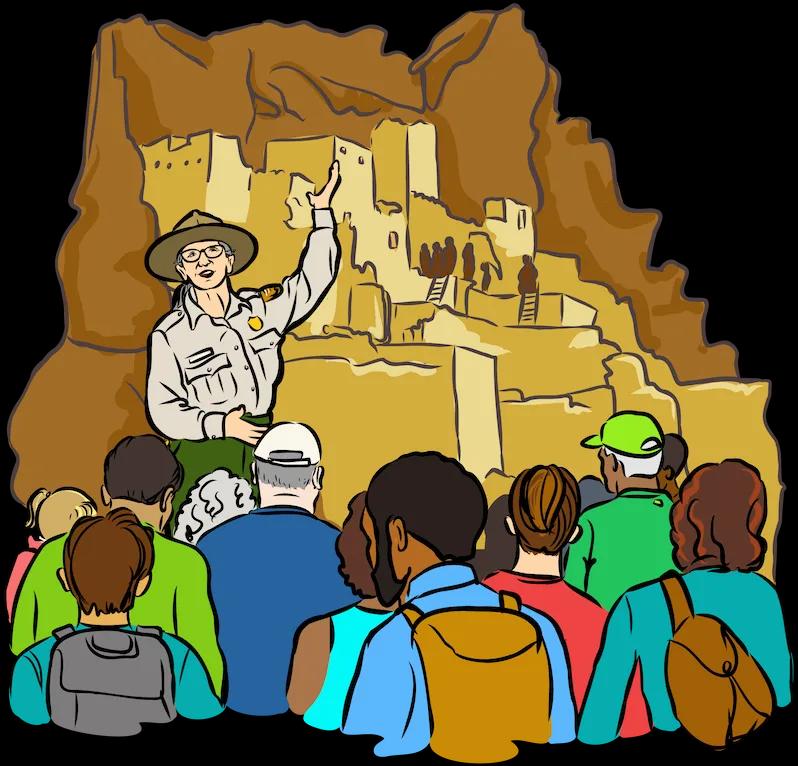Fossil Butte: Few Know About This Cool National Park Site
In the southwestern corner of Wyoming is a fun hidden gem - the national park site of Fossil Butte.

In the southwestern corner of Wyoming is a fun hidden gem - the national park site of Fossil Butte.
The pulse of what's trending on The Parks Channel. Check out the most watched videos.


32°21'0.42"N, 90°52'55.68"W
Vicksburg
Mississippi
Louisiana
Vicksburg NMP offers a great glimpse at a terrible time in our nation's history. Now it just needs to be kept up better!


18°20'43.19"N, 64°44'19.9"W
Virgin Islands National Park
U.S. Virgin Islands
Join Alice as she explores the US Virgin Islands National Park on St. John in the Caribbean. Start the day with a short hike and then hit the ocean.


22°12'43.65"N, 159°24'26.39"W
Hawai'i Volcanoes
Hawaii
Join Alice as she explores Hawaii Volcanoes National Park and takes an epic hike up Mauna Loa Volcano.

Ford's Theatre in Washington, D.C. is most famous for being the site of the assassination of President Abraham Lincoln on April 14, 1865. The 56-year-old Lincoln was shot in the head by John Wilkes Booth while attending a performance of Our American Cousin at the theater. He was then carried across the street to the Petersen House, where he died the next morning. The theater and the Petersen House are now preserved together as Ford's Theatre National Historic Site. The site is open to the public for tours and educational programs. It is a somber reminder of one of the darkest moments in American history.
Go to park page
George Rogers Clark National Historical Park commemorates an important victory during the American Revolution. The park is located on the banks of the Wabash River in Vincennes, Indiana, at what is believed to be the site of Fort Sackville. On February 25, 1779, Lieutenant Colonel George Rogers Clark led the capture of Fort Sackville and British Lt. Governor Henry Hamilton as part of the celebrated Illinois Campaign. The heroic march of Clark's men from Kaskaskia on the Mississippi River in mid-winter and the subsequent victory over the British remains one of the most memorable feats of the American Revolution. Today, visitors to the park can see a replica of Fort Sackville, tour a museum that tells the story of the Illinois Campaign, and explore hiking trails that wind through the scenic riverfront.
Go to park page
The final home of Patrick Henry, the Founding Father and orator of the American Revolution, Red Hill Plantation is located in Charlotte County, Virginia, near the Town of Brookneal. Patrick Henry bought the plantation at his retirement in 1794 and occupied it until 1799, when he died. In addition to the main house, there were other buildings on the property that Henry used for various purposes, including a law office, a store, and a gristmill. After Henry's death, his wife managed the plantation for several years before selling it to a relative. Today, Red Hill is a National Historic Landmark and is open to the public for tours and events.
Go to park page
Cape Cod National Seashore is a federally protected area that encompasses some of the most beautiful coastline in the United States. It's especially well known for the Cape Cod Canal, a man-made waterway that connects Cape Cod Bay to Buzzards Bay. However, Cape Cod National Seashore is also home to another famous route: the coast of the Atlantic Ocean in Massachusetts. This route was famously traced by Henry David Thoreau, and today visitors can explore it for themselves. The coastline offers stunning views of the Atlantic, as well as a chance to see some of the local wildlife. Whether you're an experienced hiker or simply looking for a pleasant walk, Cape Cod National Seashore is definitely worth a visit.
Go to park page
Grand Staircase-Escalante National Monument is a breathtaking and expansive protected area in southern Utah. Encompassing nearly 1.9 million acres, it boasts a landscape characterized by rugged canyons, towering cliffs, and colorful sandstone formations. It is located in the ancestral lands of the Puebloan and Fremont People, and their descendants, including people from the Hopi, Paiute, Zuni, Ute, and Navajo tribes. Some of the most remote land—and the last to be mapped—in the contiguous United States, the Monument protects the Grand Staircase, the Kaiparowits Plateau, and the Canyons of the Escalante (Escalante River). The monument is administered by the Bureau of Land Management (BLM) as part of the National Conservation Lands system.
Go to park page
Dunes are prettier in pink! The striking sand in this beautiful Utah state park was created by the erosion of pink-colored Navajo Sandstone. Located southeast of Zion, it's a great place for four-wheeling and camping. Sandboarding is also a popular activity, sandboards and sand sleds can be rented directly at the park.
Go to park page
We curate videos that entertain and inform. Join our growing community of creators – or simply explore.
Explore videos

Create your own profile, playlists and checklists.